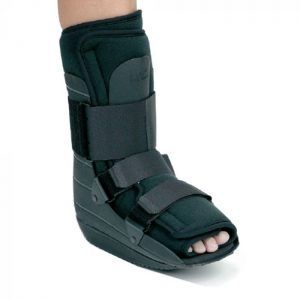27 Jan Shin Splints
Shins splints isn’t what you probably think it is. Let me explain:
What is it: ‘Shin splints’ is actually an umbrella term for pain along your lower leg (your shin area). Conditions that can occur to cause this type of pain include medial tibial stress syndrome and tibial stress fracture (among others).
- Medial tibial stress syndrome is an inflammation of the muscles, tendons and bone tissue along your tibia (shin bone) and is often felt along the inside edge of the shin bone
- Tibial stress fracture is when the shin bone fractures and is often felt in a specific spot along the shin bone
Cause: The main cause of these conditions is typically overloading the tissues (muscles/tendons/bone) by doing too much exercise too quickly or from increasing exercise intensity. Other factors that can contribute (but are not the only cause) include your foot and leg biomechanics (e.g. the way your foot & leg moves when you run), your footwear (e.g. worn out shoes) or the surface you exercise on (e.g. pavement) as well as your beliefs around pain.
Signs & Symptoms: You may feel a dull ache or sharp pain and pain can be either side of the shin bone and tender to touch. Pain is typically worse during exercise and you may also experience swelling in the area.
Confirm diagnosis: The exact condition causing your shin splints can sometimes be difficult to determine, however typically your physio or doctor can determine the most likely condition by the symptoms you describe and from discussing your recent exercise history. To diagnose a stress fracture an x-ray is typically the first starting point in regards to imaging, however sometimes in their early phases they don’t show on x-ray and further imaging such as an MRI or bone scan are recommended.
How to treat it: The initial most important treatment for the common causes of shin splints is to rest from the aggravating activity (e.g. running). Depending on the severity of the condition, this may mean resting from a few days, up to several months. For stress fractures it may be recommended for you to wear a cam boot for a period of time. Cam boots are designed to support and unload the fractured area.

Other things that may help calm symptoms initially can include icing, taping and massage but this should be guided by your physiotherapist. I will show you how I tape to help decrease symptoms of shin splints in a later post.
Once symptoms have settled, it is important to address the causes as mentioned above. Specific rehab exercises will depend on your condition and what has contributed to the cause, for example may include exercises for strengthening your foot or hip muscles. Your physiotherapist can help guide you through this process which should include a very graduated return to exercise such as running and may include footwear advice.
To find a physio in your area of Australia or New Zealand click here.
Recovery time: Depending on your condition and the severity, as mentioned above it may require resting from a few days, up to several months. I would recommend seeing a physio as soon as you first experience symptoms, as early treatment can then mean a much quicker recovery.
Remember to sign up to my mailing list or follow me on Facebook or Instagram for regular physio tips.


